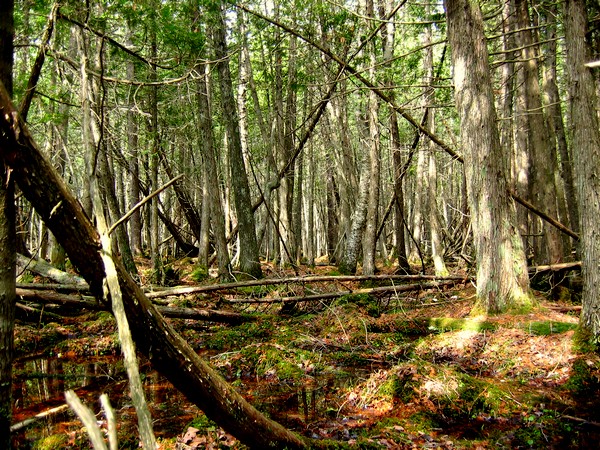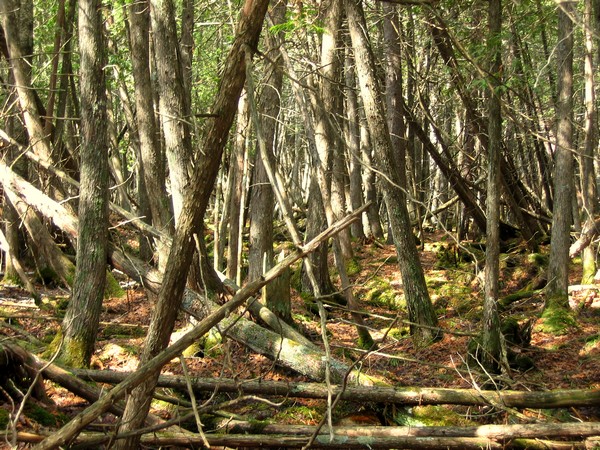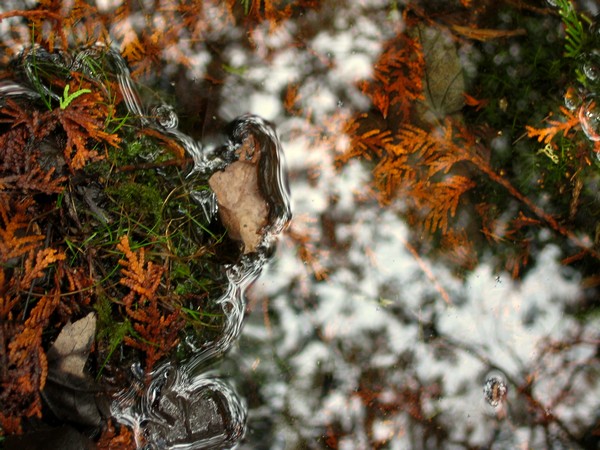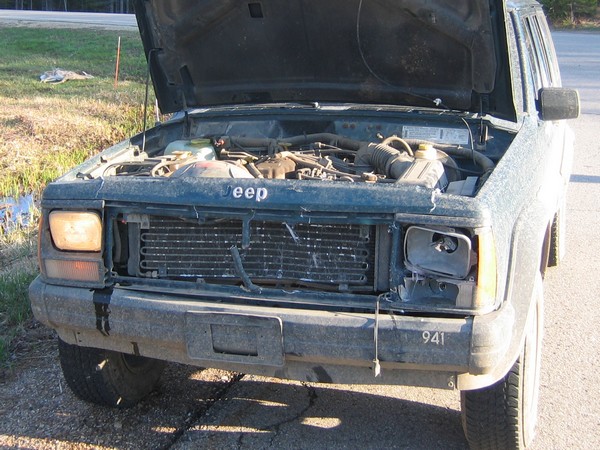Cedar Swamps and Deer
Right now I should be back in East Lansing after a week of fieldwork in our Michigan Upper Peninsula (the UP) study area. We’ve been in the UP this last week to finish up on our mesic conifer planting and white-tailed deer density fieldwork that I’ve written about previously. However, an incident with a deer has delayed us (see the bottom of this post) so I’m doing some data entry and writing in Marquette while our Jeep is repaired.

In previous posts about the fieldwork we've done in the UP, I have included photos from forest stands containing deciduous hardwood species such as Sugar Maple or American Beech. Generally, it's understood that white-tailed deer browse juveniles trees in hardwood stands during the daytime in the winter, but shelter overnight in nearby lowland conifer stands. One of the aspects of our project is to identify some quantitative relationships for this behaviour, and so we've often had take measurements in the cedar swamps adjacent to northern hardwood stands.

As you can see from the picture above, the density of cedar swamps can make tree measurements a bit tricky. A standard measure of forest stand density (or stocking) is 'stand basal area' - a measure of the area occupied by tree stems (i.e. trunks) in a given area. The northern hardwood stands in our study area can have a stand basal area of anywhere between 60 and 100 square feet per acre. Cedar swamps are much more densely populated, with stand basal area values of 280 to 350 square feet per acre. An example of the transition between these stand types is shown in the picture below (click for a larger image).

The high density of the cedar swamps combined with continual cover provided by the evergreen canopy (generally) make winter snow depths lower and winter air temperatures higher compared with the deciduous hardwood stands. The soggy conditions underfoot make surveying cedar swamps even trickier - one has to hop from tree-root island to tree-root island over puddles whilst trying not to impale oneself on the lower branches. Even with care given enough time you're guaranteed scratches and wet boots.

We've completed our fieldwork for now and are just waiting for our Jeep to be fixed after we hit a deer on our last day of work. With so many deer in the area and the high number of miles we drive around our study area, it was only a matter time before we hit one. We were on a major highway and the deer came out of nowhere. We've often spooked deer driving on tracks through the forest - it seems to me that when they're startled they just bolt in whatever direction they happen to be facing at the time. Even if that means running across the road in front of your vehicle. As you can see below, it left quite a dent in the radiator. But Megan did a good job of keeping us on the road and thankfully the only casualty was the deer.

In previous posts about the fieldwork we've done in the UP, I have included photos from forest stands containing deciduous hardwood species such as Sugar Maple or American Beech. Generally, it's understood that white-tailed deer browse juveniles trees in hardwood stands during the daytime in the winter, but shelter overnight in nearby lowland conifer stands. One of the aspects of our project is to identify some quantitative relationships for this behaviour, and so we've often had take measurements in the cedar swamps adjacent to northern hardwood stands.
As you can see from the picture above, the density of cedar swamps can make tree measurements a bit tricky. A standard measure of forest stand density (or stocking) is 'stand basal area' - a measure of the area occupied by tree stems (i.e. trunks) in a given area. The northern hardwood stands in our study area can have a stand basal area of anywhere between 60 and 100 square feet per acre. Cedar swamps are much more densely populated, with stand basal area values of 280 to 350 square feet per acre. An example of the transition between these stand types is shown in the picture below (click for a larger image).

The high density of the cedar swamps combined with continual cover provided by the evergreen canopy (generally) make winter snow depths lower and winter air temperatures higher compared with the deciduous hardwood stands. The soggy conditions underfoot make surveying cedar swamps even trickier - one has to hop from tree-root island to tree-root island over puddles whilst trying not to impale oneself on the lower branches. Even with care given enough time you're guaranteed scratches and wet boots.
We've completed our fieldwork for now and are just waiting for our Jeep to be fixed after we hit a deer on our last day of work. With so many deer in the area and the high number of miles we drive around our study area, it was only a matter time before we hit one. We were on a major highway and the deer came out of nowhere. We've often spooked deer driving on tracks through the forest - it seems to me that when they're startled they just bolt in whatever direction they happen to be facing at the time. Even if that means running across the road in front of your vehicle. As you can see below, it left quite a dent in the radiator. But Megan did a good job of keeping us on the road and thankfully the only casualty was the deer.

Labels: Ecological, Forests, MichiganUP, Photography

This work by James D.A. Millington is licensed under a Creative Commons Attribution-Noncommercial-Share Alike 3.0 United States License.


0 Comments:
Post a Comment
<< Home